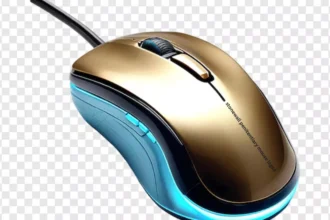Navigating the world of fashion can be a maze, especially when it comes to understanding dress codes. Among them, “smart casual” stands out as both versatile and often perplexing. So, what is smart casual? It’s that sweet spot between formal and relaxed—a style that allows you to look polished while still feeling comfortable. Whether you’re heading to a brunch with friends or an office meeting, mastering this dress code can elevate your appearance without sacrificing your personal flair. Let’s dive into the origins, components, and styling tips for creating the perfect smart casual outfit!
Definition of what is smart casual
Smart casual is a dress code that strikes a balance between formal and informal wear. It’s all about looking polished while maintaining an element of comfort and personal style.
This versatile attire typically combines tailored pieces with more relaxed elements. Think blazers paired with crisp jeans or stylish shoes mixed with smart shirts.
The essence lies in its adaptability; smart casual can be worn across various settings, from creative workplaces to social gatherings. It’s not just about the clothes; it reflects a certain attitude—confident yet approachable.
What is smart casual? It encourages you to express your individuality while adhering to a standard of sophistication. Embracing this blend allows for creativity in how you present yourself without crossing into overly formal territory.
Origin of what is smart casual Dress Code
The term “smart casual” emerged in the late 20th century, reflecting a shift in workplace and social norms. As businesses began embracing more relaxed environments, traditional dress codes evolved to meet new expectations.
Initially seen at events like cocktail parties and informal gatherings, smart casual allowed individuals to blend comfort with sophistication. It represented a middle ground between formal attire and everyday wear.
The rise of tech companies in the 1990s further popularized this style. Employees sought ways to express individuality while maintaining professionalism. This led to innovative combinations of tailored pieces with casual staples.
Today, smart casual is widely accepted across various settings—from office meetings to dinner dates—making it a versatile choice for modern wardrobes. The definition continues to adapt as fashion trends change and cultural perceptions evolve.
Components of what is smart casual
When diving into the components of smart casual, think balance. This style marries comfort with a polished look.
For tops, crisp button-down shirts or elegant blouses are excellent choices. Pair them with tailored sweaters or blazers for that refined touch.
Bottoms play a significant role too. Chinos and well-fitted jeans can easily elevate your ensemble when styled right. Opt for neutral colors to maintain versatility.
Footwear is where you can express personality while staying sophisticated. Loafers, ankle boots, or clean sneakers work wonderfully in this mix.
Accessories should be kept minimal yet thoughtful—think classic watches or delicate jewelry that enhance rather than overpower your outfit.
Remember, the goal is to project effortless sophistication while ensuring ease in movement and comfort throughout the day.
Dos and Don’ts of what is smart casual Dressing
When it comes to smart casual dressing, knowing the dos and don’ts can make all the difference.
Do invest in quality fabrics. Well-made items elevate your look and ensure comfort throughout the day.
Don’t go for overly casual pieces like sweatpants or flip-flops. These can undermine the polished vibe of smart casual attire.
Do embrace layering. A blazer over a crisp shirt adds sophistication without being too formal.
Avoid graphic tees unless paired with tailored trousers or chic shoes. They may detract from an otherwise refined outfit.
Do pay attention to fit. Tailored garments always look better and enhance your silhouette.
Don’t forget about accessories; they can pull your ensemble together beautifully, but keep them minimalistic to avoid cluttering your appearance.
Do choose appropriate footwear—think loafers or stylish sneakers—but steer clear of gym shoes that scream workout mode.
How to Style a what is smart casual Outfit
Styling a smart casual outfit is all about balance. Start with the foundation: choose well-fitted trousers or dark jeans that look polished yet comfortable. Pair these with a crisp button-up shirt or a stylish blouse.
Layering adds depth to your look. Consider a tailored blazer or an elegant cardigan for those cooler days. The right outerwear can elevate even the simplest outfits.
Footwear matters too—opt for loafers, ankle boots, or chic sneakers depending on the occasion. Avoid overly formal shoes; you want comfort without sacrificing style.
Accessorizing can make a big difference. A statement watch or simple jewelry enhances your overall appearance without overwhelming it.
Don’t forget about colors and patterns. Subtle prints and cohesive color palettes help create visual interest while keeping things sophisticated.
Examples of Occasions Where Smart Casual is Appropriate
Smart casual is the perfect blend of comfort and style, making it suitable for various occasions.
Think about attending a dinner party at a friend’s house. You want to look put-together but still relaxed. Smart casual allows you to wear nice jeans with a stylish blazer.
Corporate events often embrace this dress code too. Whether it’s after-work drinks or an informal meeting, pairing tailored trousers with a crisp button-up shirt strikes the right balance.
Don’t forget weekend brunches! A cute midi skirt paired with a cozy sweater can make you feel chic without trying too hard.
Art gallery openings are also great opportunities to showcase your smart casual side. Opt for trendy sneakers matched with smart attire for that artistic flair.
Even travel calls for smart casual outfits; think comfortable yet polished looks that transition easily from planes to city streets.
The Evolution of the Smart Casual Dress Code in Modern Times
Smart casual has transformed dramatically over the past few decades. Originally, it served as a bridge between formal and casual attire, aimed at professionals in relaxed office environments or social gatherings.
As workplaces evolved, so did the interpretation of smart casual. The rise of tech startups and creative industries ushered in a more relaxed approach to dressing while maintaining an air of sophistication.
Today, smart casual encompasses a blend of comfort and style. Think tailored joggers paired with loafers or crisp shirts worn with stylish sneakers. Fabrics have also shifted; materials like denim and jersey are increasingly embraced alongside traditional cottons and wool.
Cultural influences play a significant role too. Global fashion trends inspire individuals to express personal style within this dress code framework, making it highly versatile for various settings. This evolution reflects not just changing attitudes towards work but also our desire for individuality through clothing choices.
Conclusion
Smart casual is a versatile and flexible dress code that allows for personal expression while maintaining a polished appearance. It’s become a staple in both social and professional settings, reflecting the changing landscape of fashion and work attire. Understanding its components, dos and don’ts, and how to style it can help you navigate various occasions with confidence.
As we’ve explored, smart casual has roots in traditional menswear but has evolved dramatically over time. It now embraces a wide range of clothing options suitable for both genders. Whether dressing for brunch with friends or an evening event at the office, knowing what constitutes smart casual empowers you to make informed choices.
Mastering smart casual means striking the right balance between comfort and sophistication. When done well, it showcases your personality while ensuring you’re appropriately dressed for any occasion that calls for this adaptable style. Embrace the freedom that comes with smart casual dressing—it’s all about feeling good while looking put together.
















